Written by Colette Nichol, Solo Filmmaker and Story Strategist
Estimated reading time: 8 minutes
Understanding the concept of focal length is crucial for anyone serious about solo filmmaking and photography. It’s a feature of lenses that significantly impacts your imagery, affecting how your subjects and scenes are captured.
This post demystifies the term “focal length” and explains its importance in the world of DSLR filmmaking and photography.
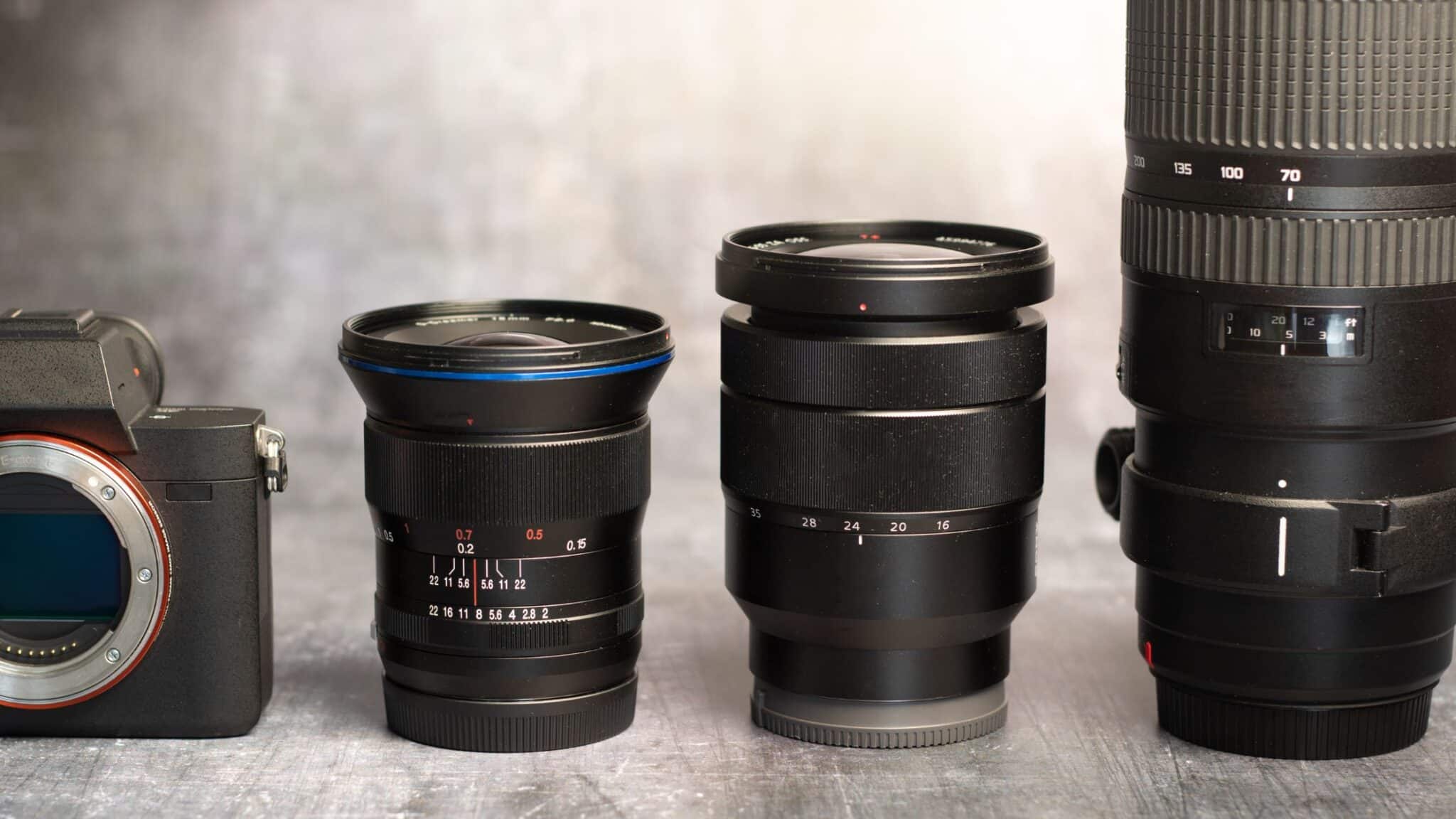
The Basics of Focal Length
At its core, the focal length of a lens determines how much of the scene in front of the camera will be captured and how it will be visually compressed or expanded.
Measured in millimeters (mm), the focal length indicates the distance between the optical center of the lens and the image sensor when the subject is in focus. Lenses can be wide, standard, or telephoto, each offering a different perspective and field of view. A long lens is one that is more “zoomed in.”
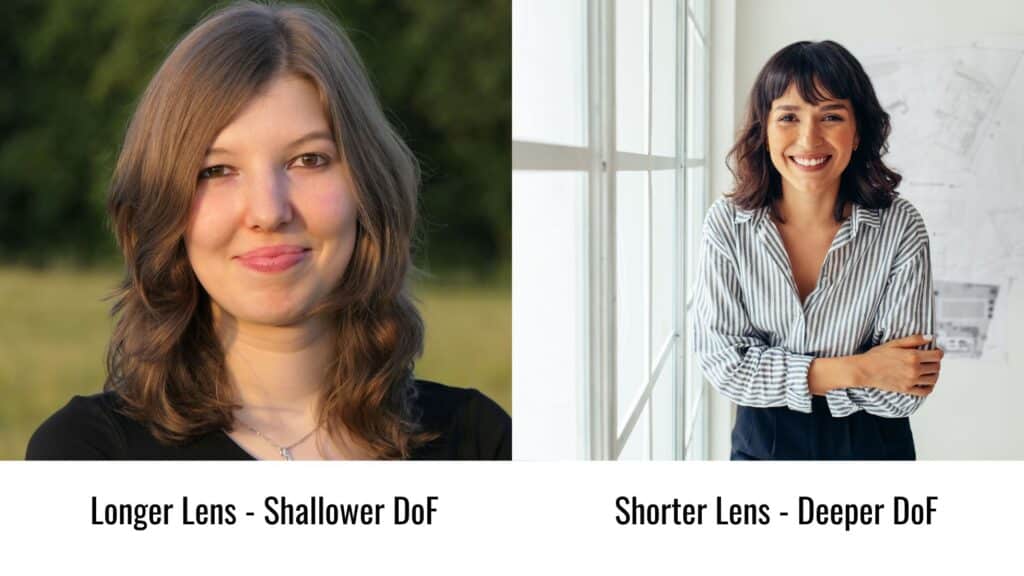
To find out the best lens for video, check out the post HERE.
Here’s the scientific definition of focal length:
The focal length of a lens is defined as the distance, measured in millimeters, from the optical center of the lens to the camera’s sensor (or film plane) when the lens is focused at infinity. This distance determines the angle of view and magnification of the lens, affecting how much of the scene is captured and how large subjects appear in the frame.
The focal length is a key specification of a lens and plays a crucial role in determining the field of view:
- Short focal lengths (e.g., 10mm, 24mm) produce wide-angle views, capturing a larger portion of the scene.
- Long focal lengths (e.g., 85mm, 200mm) produce narrow-angle views, magnifying distant subjects and making them appear closer.
In practical terms, the focal length influences the photographer’s perspective and composition options:
- Wide-angle lenses (short focal lengths) are often used for landscapes, architecture, and interior photography.
- Telephoto lenses (long focal lengths) are typically used for wildlife, sports, and portrait photography.
For zoom lenses, the focal length range (e.g., 24-70mm) indicates the variable distance between the optical center and the sensor, allowing for a range of compositions from wide-angle to moderate telephoto within a single lens.
For video shooters, a standard zoom lens of 24-70mm for full-frame cameras and 17-55mm for crop sensor cameras is a key tool.
Keep in mind that if you have a crop-sensor camera, which most beginners do, then your lenses will all be more “zoomed in” than if they were being used on a full-frame camera.
Wide-Angle Lenses (Less than 35mm)
These lenses have a shorter focal length and provide a broader view of the scene.
They’re excellent for establishing shots or filming in tight spaces. Wide-angle lenses tend to exaggerate distances, making objects seem farther apart than they are.
Standard Lenses (35mm to 50mm)
Offering a focal length similar to what the human eye sees, standard lenses are versatile.
They’re well-suited for a variety of shots, from portraits to landscapes, providing a natural perspective without significant distortion.
Telephoto Lenses (Over 70mm)
With a longer focal length, telephoto lenses bring distant subjects closer.
They’re ideal for close-ups and isolating subjects from the background. These lenses compress the sense of depth, making objects appear closer together than they are.
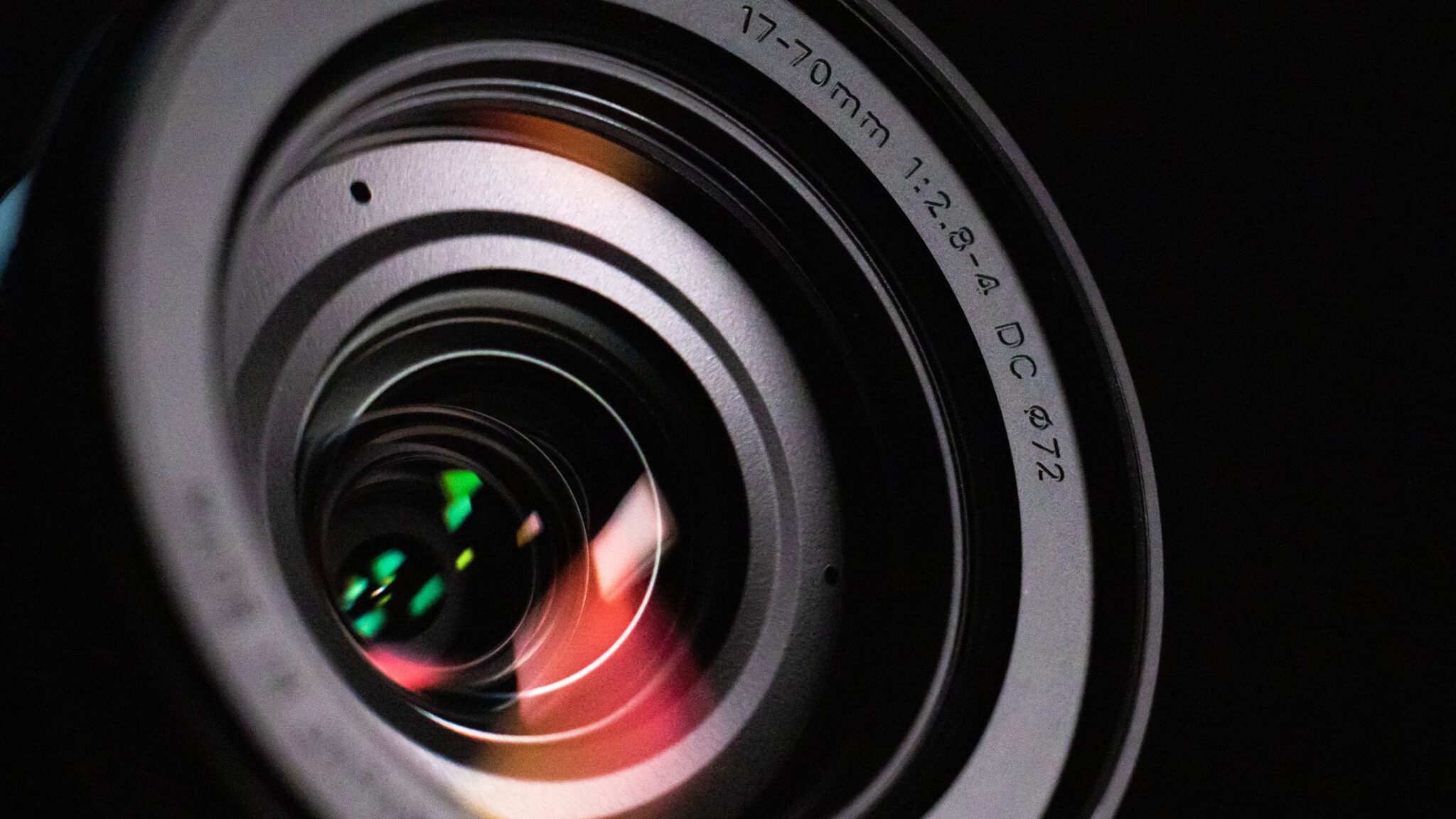
Why Focal Length Matters for Filmmakers
Focal length choice affects composition, perspective, and storytelling.
It influences the viewer’s perception of the scene, character relationships, and the emotional tone of the shot. For example, a wide-angle lens may convey openness while a telephoto lens might create a feeling of intimacy or tension by focusing tightly on a subject.
Understanding focal length helps filmmakers select the right lens for each shot or scene, considering factors like the desired field of view, image compression, and the portrayal of space and distance.
For example, if you know that you need shallow depth of field in your shot, you may choose to use a longer lens.
It’s easier to compress your background and achieve shallow depth of field when you use a longer lens and get further from the subject.
However, if you want deep focus, you may use a shorter lens and get closer to the subject.
The way your subjects’ faces look while be affected by the length of the lens and how close you are. For example, when you use a wide lens but get close to the subject, the features of the subject are somewhat distorted. This technique is commonly used by the Cohen brothers.
Common Questions
Why Do Different Focal Lengths Change the Perspective in a Video?
Different focal lengths alter perspective by changing the apparent distance between foreground and background elements; wide angles expand this distance, while telephoto lenses compress it.
This effect allows filmmakers to manipulate spatial relationships and depth perception in a scene. Using various focal lengths, shooters can creatively influence the viewer’s interpretation of space.
What Is the Difference Between Zoom and Prime Lenses?
Zoom lenses offer variable focal lengths for flexibility in framing, but can be bulkier and sometimes offer lower image quality than prime lenses.
Prime lenses have a fixed focal length, generally providing superior sharpness and larger apertures for better low-light performance. The choice between zoom and prime lenses depends on your needs.
Many video shooters choose to use a zoom lens in most cases because you often don’t have time to change out your lenses. But for just walking around doing low-key shooting a prime lens is way lighter and easier to carry!
How Do I Choose the Right Focal Length?
Choosing the right focal length involves considering the scene’s spatial requirements, the desired aesthetic and emotional impact on the audience, and practical shooting conditions.
Wide-angle lenses are suited for expansive views or tight spaces, standard lenses for typical dialogue shots and everyday shooting, and telephoto lenses help you isolate subjects and do extreme close ups.
I recommend that you start shooting with a zoom lens and pay attention to how your use of different focal lengths changes the look and feel of the scene. As you experiment you’ll get to know how different focal lengths play out and be better able to make choices that work.
Does the Camera’s Sensor Size Affect the Effective Focal Length of a Lens?
Yes, the camera’s sensor size affects the effective focal length due to the crop factor, which makes a lens seem longer on cameras with smaller sensors.
This means that the same lens can provide a different field of view on cameras with different sensor sizes. Understanding this effect is crucial for achieving the desired composition and field of view in your shots.
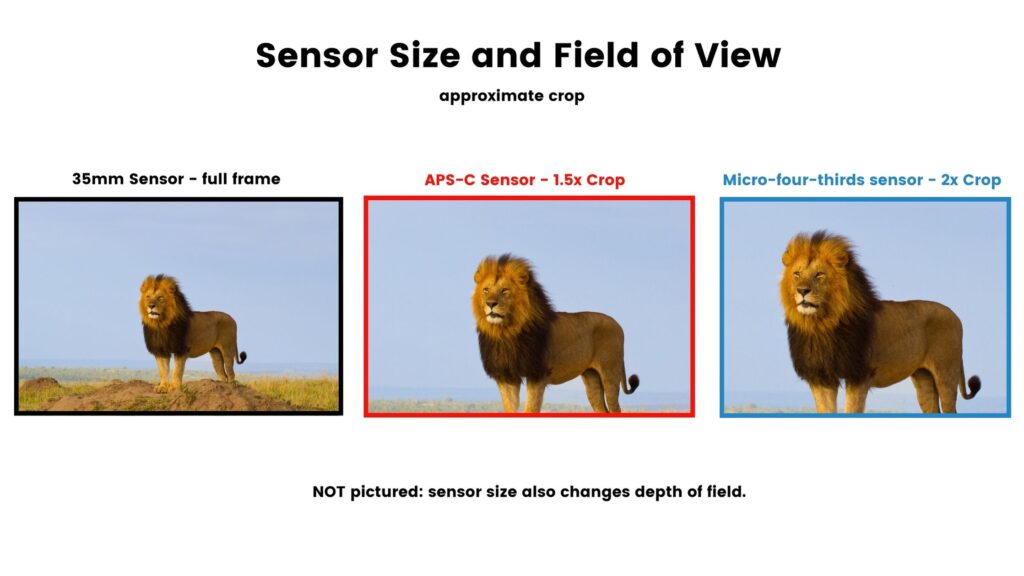
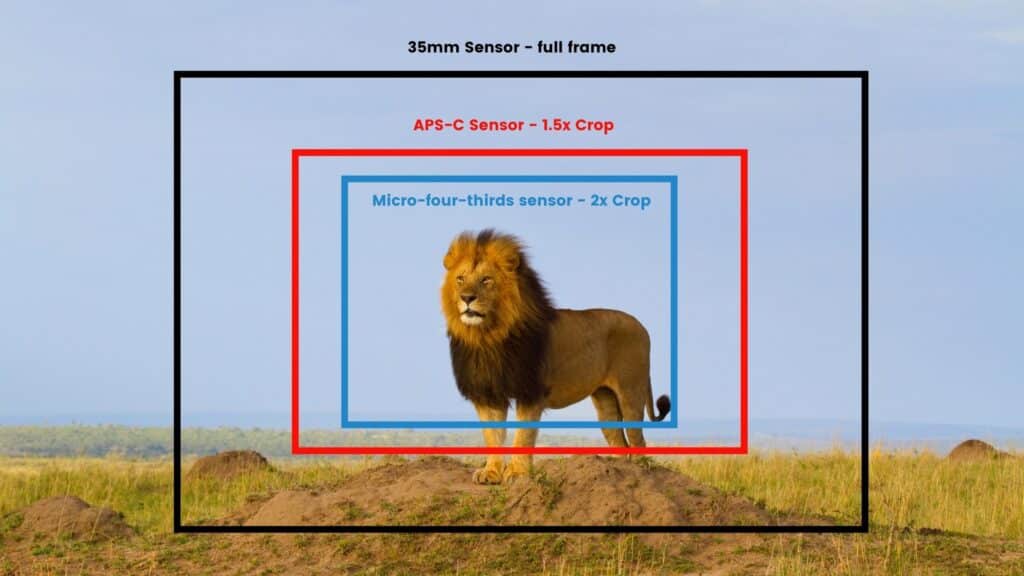
How Does Focal Length Influence Depth of Field?
Focal length directly influences depth of field (DoF).
Longer focal lengths produce a shallower DoF, blurring the background more effectively to isolate the subject.
Conversely, shorter focal lengths result in a deeper DoF, keeping more of the scene in focus. This relationship allows filmmakers to control the visual focus and narrative emphasis within a scene.
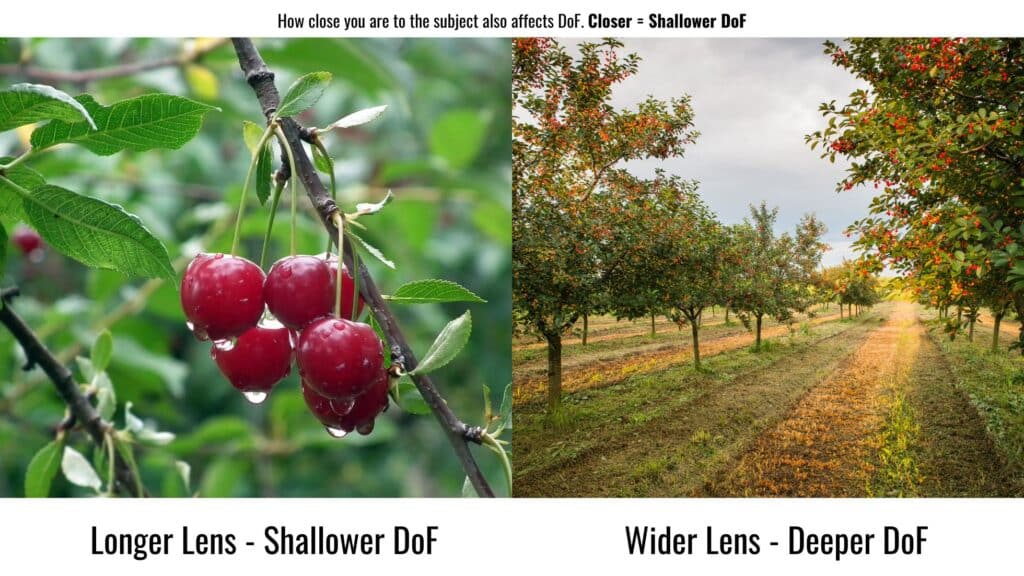
Final Thoughts
Focal length is more than just a technical specification of a lens.
It’s a fundamental aspect of visual storytelling in filmmaking.
By choosing lenses with different focal lengths, filmmakers can manipulate how a scene is presented to the audience, influencing the narrative’s emotional and psychological impact.
Whether you’re a beginner or have some experience behind the camera, spending time experimenting with various focal lengths can enhance your visual storytelling skills and open up new creative possibilities in your filmmaking journey!
More Filmmaking Articles
⭐ How To Know What Lenses Are Compatible With My Camera

About the Author
Hi! I’m Colette Nichol. I’m a solo filmmaker and story strategist based out of rainy Vancouver, Canada. I’ve been making videos and micro films for small businesses and global brands since 2014.
Plus, I LOVE to help aspiring filmmakers pursue their dreams and start making films. This blog is designed to help you gain the knowledge you need to become a filmmaker.
If you want more, get on the waitlist for the Story Envelope Academy Solo Filmmaking Mentorship Program. It opens up one time per year and is the best way to become a filmmaking or video pro fast!
CLICK HERE to get on the solo filmmaking mentorship waitlist.